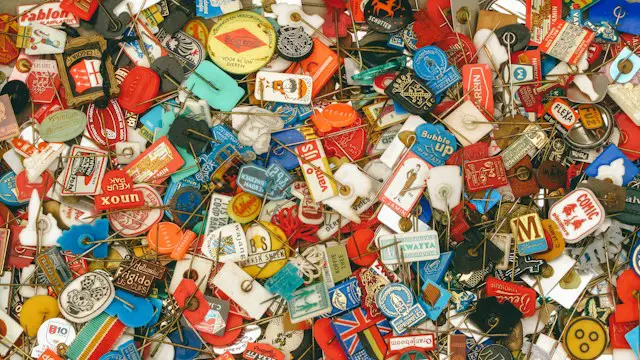Enamel is one of the most popular materials used in the production of these items, and with its wide range of options, it’s easy to get overwhelmed. The two most common types are hard and soft enamel, and each has its own unique benefits. But which one is right for you?
In this blog post, we will delve into the differences between hard and soft enamel, their respective properties, and techniques, so you can make an informed decision on which type best suits your needs. Whether you’re a seasoned collector looking to expand your collection or a business owner searching for promotional items that stand out, keep reading to find out which type of enamel is perfect for you.

Cost
If you’re wondering why hard enamel pins tend to cost more than their soft enamel counterparts, it has to do with the creation process. Unlike soft enamel, which is air-dried and leaves a slightly raised surface, hard enamel is filled to the brim and polished down to create a smooth, flat surface. This process involves multiple rounds of baking and polishing, which takes more time and effort. Despite the higher cost, you can still find out how to take advantage of discounts and bulk orders to reduce the overall price. You can even compare prices between different manufacturers before making a decision.
Durability
Generally, hard enamel is highly sought-after for its ruggedness and scratch resistance, making it an ideal option for items that are frequently handled, such as badges or jewelry. This enamel type is made by filling the engraved cavities on the metal with a special enamel mixture and then curing it at high temperatures.
On the other hand, soft enamel is a flexible and cost-effective alternative that requires a single layer of enamel that remains slightly raised. While still durable, it is not as resistant to wear and tear as hard enamel and may require maintenance over time.
Texture
As mentioned earlier, hard enamel is polished down to create a smooth and flat surface, giving it a glossy finish. This type of enamel also allows for finer details and lines, popular among designers who want to create intricate designs.
Soft enamel has a more textured appearance due to the raised surface. This texture gives it a unique look and adds depth to the design, which is a popular choice for items with bold designs or logos. Regardless of the type you choose, both hard and soft enamel offer a wide range of color options to bring your design to life.
Color Vibrancy
The choice between soft enamel and hard enamel can greatly affect the appearance of your design. Soft enamel colors tend to appear more vibrant thanks to the depth created by the raised metal edges. Meanwhile, hard enamel typically offers a more uniform and glossy color appearance.
Understanding these nuances can help you make the best choice for your pin design, depending on the look you want to achieve. No matter the type, both offer the option to add glitter or a glow-in-the-dark effect for an extra pop of color and fun.
Technique
When creating enamel items, the technique used can greatly impact the final product. Hard enamel, for example, requires a process that involves adding multiple layers of enamel to the item and then baking it at high temperatures to ensure the enamel is properly fused to the surface. This method results in a durable, long-lasting item that is highly resistant to scratching.
Soft enamel items, however, are created using a single layer of enamel that is applied to the item and then baked. While soft enamel items don’t have the same durability as hard enamel items, they have a unique look and feel that can be perfect for certain applications. Know that both types are made with care and precision, so whichever one you choose guarantees a quality product.
Detail
For designs with intricate details and lines, hard enamel is the preferred choice. Since it has a flat, smooth surface after polishing, it allows for greater precision when filling in small areas or adding fine lines. This makes it an ideal choice for designs that require a high level of detail.
Soft enamel may not be as suitable for highly detailed designs due to the raised surface, but it can still achieve a great level of detail for most designs. However, if your design has very fine lines or small details, hard enamel may be the better option.

The choice between hard and soft enamel depends on your specific needs and preferences. Hard enamel is known for its durability, smooth finish, and ability to achieve intricate details, while soft enamel offers a more textured look at a lower cost. Whichever type you choose, both hard and soft enamel can result in beautiful and unique items that are sure to stand out. Consider the purpose and design of your item, as well as your budget, when deciding between these two types of enamel to ensure you make the best choice for your needs.










